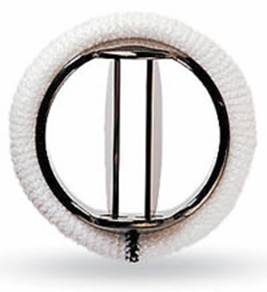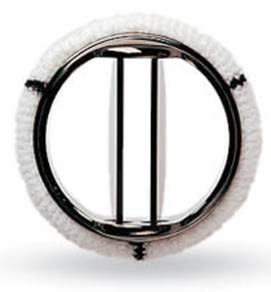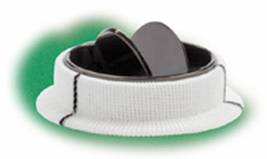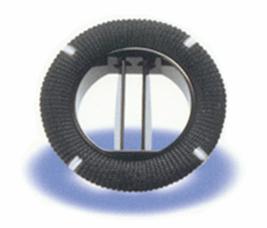Mechanical valves are made totally of mechanical parts which are tolerated well by the body. The bileaflet valve is used most often. It consists of two carbon leaflets in a ring covered with polyester knit fabric. There are advantages and drawbacks to mechanical valves.

St. Jude Medical® Mechanical Heart Valve

SJM Regent® Valve
The St. Jude Medical® Regent valve is available for aortic valve replacements, and the standard St. Jude Medical® valve is used in the aortic and mitral valve positions.
The St. Jude heart valve was the first bileaflet mechanical heart valve (St. Jude Medical® (SJM)). This valve has a track record spanning 3 decades of excellent results. This bileaflet mechanical heart valve is designed and manufactured of pyrolytic carbon.
The CarboMedics Prosthetic Heart Valve (CPHV™)

Top Hat™ Supra-Annular
Aortic Valve

Standard Mitral Valve
CarboMedics manufactures a variety of bileaflet mechanical heart valves. The Top Hat Supra-Annular valve is used for aortic valve replacement and the standard valve in the mitral position. A third valve, the Reduce R Aortic Valve may also be used for aortic valve replacement.
The valve housing and leaflets are made of Pyrolite carbon, a unique form of carbon which Carbomedics engineers discovered in the sixties. Attached to the carbon housing is a reinforcing band of titanium and attached to the titanium band is a suture ring of PET fabric. A metallic nitinol wire holds the titanium ring to the housing with an interference groove system. Pyrolite is biocompatible.
Advantages: Mechanical valves are very durable. They are designed to last a lifetime.
Disadvantages: Due to the artificial material involved, patients who receive these valves require lifelong treatment with a blood-thinning (anticoagulant) medication. Blood-thinners are medications (such as warfarin) that delay the clotting action of the blood. They help prevent clots from forming on the mechanical valve, which can cause a heart attack or stroke.
